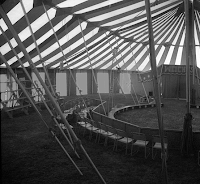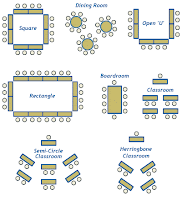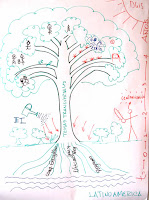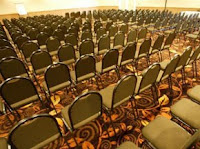 Lizzie and I recently ran a 2.5 day visioning workshop using systems thinking tools in Meso-America in Spanish (see recent blog post: Want more amplification: Don’t call it training) without ever formally taking the floor. We did the design work and preparation, consulted pre-event with our local partners, and attended the workshop, and left the on stage facilitation to two fantastic regional experts. The workshop ran beautifully – it popped out, perfectly formed (to participants).
Lizzie and I recently ran a 2.5 day visioning workshop using systems thinking tools in Meso-America in Spanish (see recent blog post: Want more amplification: Don’t call it training) without ever formally taking the floor. We did the design work and preparation, consulted pre-event with our local partners, and attended the workshop, and left the on stage facilitation to two fantastic regional experts. The workshop ran beautifully – it popped out, perfectly formed (to participants).
Of course, behind the scenes it took lots of work. Having a terrific delivery team is obviously the first big step, and we had that with our remarkable Mexican and Argentinian bi-lingual facilitators (you would never have imagined that they first met only the day before the workshop). The second is airtight preparation and process documentation. It’s on this latter that I want to expand a bit.
You can imagine that a workshop using systems tools would have emergent properties that we would want to take into consideration as the process unfolded. As a result, we took our very detailed agenda, and put Day 1 into the format of a Facilitators Guide, for discussion on our pre-workshop briefing day with the Facilitation Team and organizers. This Guide had the following components:
- The overview agenda (to see the flow and build of the workshop)
- The detailed day-to-day agenda
- Session-by-session descriptions
Each session was described for the Facilitation team and included the following information:
- Time schedule: Where it fits in the overall workshop schedule and what comes next
- Goals for the session: What’s the overall objective of this session
- Materials required: Any equipment or materials needs (aggregated later into a master materials list)
- Preparation: What speaker briefings, flipcharts prepared (including an image of these for copying), room set up, worksheets or templates to have on hand
- Process: Script for facilitator and process flow (timed out within the session), images of the PowerPoint slides to use and how to brief them, activity sequence withn session.
- Facilitator Notes: Tips, and what to watch out for, and things that might happen and what to do about that (Plan B ideas).
This level of detail helped us to discuss the overall goals, flow, and individual roles of each of the Facilitators for the whole first day. It helped make everything completely explicit so that we could explore and potentially change it, which we did in our briefing, we tightened the questions, shifted things around a bit so that they made sense to everyone and then attributed the sessions to each of the Facilitators so that their preparation that night could be focused.
During Day 1, our role was to check the Facilitators Guide against what actually happened. Checking that our time allocations were close to reality, that our instructions were clear (or if not, what needed to be said in the end to make them clearer), and noted the questions that participants asked. From the day and our end-of-day debriefing with the team, we added a section to the Facilitators Guide for each session called:
- Notes from the Meso-America workshop: Ideas and items added, and learning captured from this pilot
Also during Day 1, I wrote the Facilitators Guide for Day 2, tweaking it where possible to match the language and any learning from Day 1. We used this to allocate roles and prepare that night for Day 2. We followed the same system for the next 2 days, using the Guide for briefing, and capturing learning in our debriefing. At the end of the workshop, we had a nearly completed Facilitators Guide. The day after our workshop we had a Reflection Meeting amongst the full team of partners and facilitators. Our discussion around learning about the preparation and coordination of the meeting added the following sections before (Pre-session Preparation)and after (Annexes) the session detail:
Pre-session Preparation:
- Selecting a workshop venue: Space needs, light needs, wall space, breaks and meals
- Invitations: What people need to know to attend
- Choosing 2 Facilitators: Background and roles
- Master materials/equipment list: Aggregated from session lists for sourcing
- Rapporteuring and reporting: Getting people and set up for lots of information
- Onsite briefing: How to structure this
- First day prcess pre-opening: Engineering first impressions
Annexes:
- Reporting framework: To use as a template (2 options)
- Opening speech: This will probably be the similar each time
- Feedback form (in session): The simple form to capture participant’s reflections
- Postworkshop participants feedback: The form to send 1 month after to capture impacts
- General comments on design: Larger ideas for evolution of the workshop
- Participants comments: Some quotes from the feedback forms
So, we ended up with the whole workshop, literally, in a box! One of the plans for this workshop was that it would be repeated in three regions (it is a visioning and strategic planning workshop for a major global programme within our institution, that has regional implementation particularities). This “box” is a terrific learning tool – a useful Reusable Learning Object (RLO) – that can be sent ahead to the next partners (with the output report of the workshop) to prepare more effeciently the next iteration. It provides a place to capture learning from each subsequent workshop, so that at the end it serves as a collection of learning about this methodology, for further change. It also documents the process comprehensively enough that others who are interested in the methodology, but who did not participate, can potentially replicate all or part of the process.
All this was done just prior to and during the workshop and produced an unexpectedly useful process product that literally popped up alongside the final report.
 See Doug Johnson’s Blue Skunk Blog for “10 Commandments of Panel Sessions”. This post seemed particularly relevant for what we are about to do at our upcoming Congress in 4 weeks – that is, hear lots of panel discussions. These strike me as sensible ways to steer panels so that they do what they are meant to do (which I guess is to present a lot of information to a lot of people in a short amount of time.) Learning should also be a top goal, and I think following these “commandments” will get us a little closer to that one.
See Doug Johnson’s Blue Skunk Blog for “10 Commandments of Panel Sessions”. This post seemed particularly relevant for what we are about to do at our upcoming Congress in 4 weeks – that is, hear lots of panel discussions. These strike me as sensible ways to steer panels so that they do what they are meant to do (which I guess is to present a lot of information to a lot of people in a short amount of time.) Learning should also be a top goal, and I think following these “commandments” will get us a little closer to that one.
























